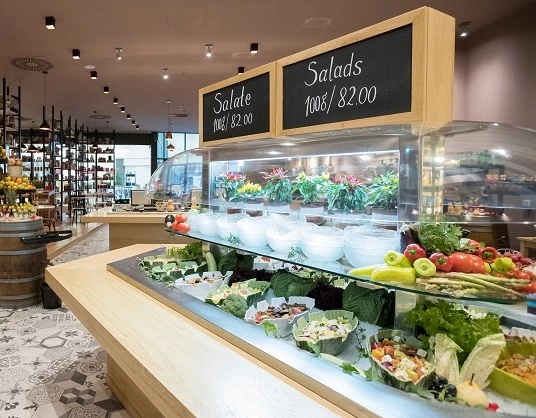A great deal has been written about celiac disease, gluten allergies, and gluten sensitivity, though much confusion and misinformation continues to make the rounds. Allergens are a common issue faced by food service experts, bringing their own unique barriers that must be overcome in order to provide your patrons with the high quality of service they deserve.
Agriculture and Agri-Food Canada estimates that nearly one-third of Canadians (around 10 million) are regularly seeking out gluten-free products. This includes around 2.5 million who require gluten-free food products for medical reasons. The growing demand for gluten-free alternatives has led to many Canadian restaurants adopting gluten-free alternatives to cater to all customers.
What is celiac disease and gluten sensitivity?
Celiac disease is a
hereditary autoimmune disease estimated to affect 1 in every 100 people around the world. When people who live with celiac disease eat food products that contain gluten (bread, baked goods, pasta, cereal, soup, and more), the food triggers an immune response that causes damage and inflammation to the small intestine - specifically the villi. This leads to the body being unable to effectively absorb nutrients. Some people suffer from non-celiac gluten sensitivity (NCGS), which causes intestinal symptoms including bloating, diarrhea, and abdominal pain. It’s estimated that
NCGS is slightly more common than celiac disease, though the actual numbers are unknown due to it being commonly self-diagnosed.
Gluten-free regulations in Canada
Division 24 of Canada’s Food and Drug Regulations (FDR) contains specific regulations for “Foods for Special Dietary Use”, which is defined as: “a food that has been specially processed or formulated to meet the particular requirements of a person: a) in whom a physical or physiological condition exists as a result of a disease, disorder or injury; or b) for whom a particular effect, including but not limited to weight loss, is to be obtained by a controlled intake of foods.”
These regulations apply to gluten-free foods necessitated by celiac disease and NCGS, with food service establishments being prohibited from advertising any food product as being “gluten-free” if it contains any amount of gluten protein. This makes it extremely important for
restaurants and food service establishments to accurately label gluten-free foods, and take measures to ensure that these labels are accurate.
What food service professionals can do to accommodate gluten-free customers
The most common and effective way to accommodate patrons with celiac disease or NCGS is to offer gluten-free options on your menu, and to create a separate section on your menu to label gluten-free dishes on the menu so that guests can easily identify gluten-free items at a glance.
Training employees to know and recognize gluten-free items on the menu is also extremely helpful, as they’ll be better able to guide customers with gluten allergies and sensitivities by pointing out popular menu items, and answer questions they may have.
Many restaurants have been successful in establishing gluten-free zones within their kitchens, ensuring that cross-contamination doesn’t take place during food preparation. It may be worth implemented a system where gluten-free foods are identified during ticketing or on order forms, to minimize the chances of mistakes being made during preparation. These approaches to accommodate gluten-free patrons can be made much more effective by ensuring that all employees have received proper food safety training, covering cross-contamination and how to effectively handle food allergens.



